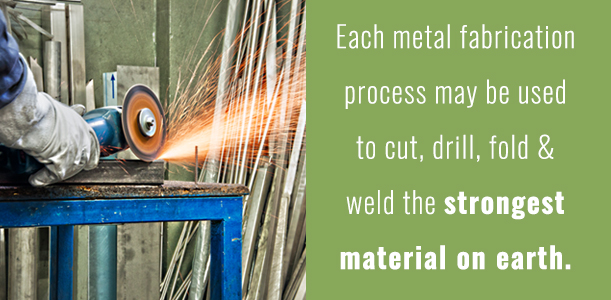Get This Report about Steel Fabrication Meaning
Wiki Article
Steel Fabrication Industry Fundamentals Explained
Table of ContentsThe 45-Second Trick For Steel Fabrication Near MeThe Greatest Guide To Steel Fabrication Near MeSteel Fabrication Process for DummiesSteel Fabrication Business Fundamentals ExplainedThe Buzz on Steel Fabrication Process
Machining, Machining is likewise a relatively easy process in principle, and yet there is a variant that can be located in it. By its nature, it is a process of eliminating excess material from raw steel items somehow. 3 of the a lot more widely known processes of machining are called milling, transforming, as well as drilling.This procedure can be done both with the aid of a certain CNC milling machine as well as manually, and also milling, in basic, is regularly a second process than not. Some variations of milling can be plain milling, climb milling, kind milling, angular milling, as well as so on. Turning is an additional variation of machining that makes use of a particularly made device turret to develop a cylindrical-shaped item by using a cutting device to eliminate parts of a raw metal piece that turns in one area.
Drilling is the most basic one out of the 3, as well as it's equally as the name suggests it's the combination of a drill and also a rotating cutting tool made use of to cut holes in the raw metal item. steel fabrication business. Shearing, Shearing is practically a variation of cutting, but it's divided right into a different classification due to its unusual strategy to the process.
Things about Fabricated Steel Angle
The cut is begun by applying stress to the metal item with the upper part of a maker (shaped like a blade), which develops a crack. By using continuously stress to the fractured metal a cut is accomplished, as well as the sheared sides can be burred afterward (burred as if the process of cleansing up the sides of the product pieces after the shearing).It is quite a well-known technique, mainly due to the fact that of its convenience it can incorporate virtually any type of metal components. There are 4 sorts of welding that are one of the most popular: FCAW, MIG/GMAW, SMAW, and TIG.FCAW or Change Cored Arc Welding utilizes a wire electrode with a core that creates protecting gas, which removes the demand for a secondary gas source.
It utilizes an external gas supply in mix with a solid wire electrode to protect against the steel piece from connecting with numerous environmental variables, making the process faster and also much more regular. SMAW or Shielded Steel Arc Welding is the many basic variation of a welding tool, it's an electrode stick that creates an electrical arc when contacting with metal, and also the heat of the arc's impact is what welds the metal pieces together.
The Greatest Guide To Fabrication Steel Chart
It makes use of a tungsten electrode rod that produces short arcs, more appropriate for hefty fabrication - steel fabrication near me. It is among the extra difficult variations of welding as well as needs a highly-skilled expert to run it effectively, yet it also helps most of metal-based products as well as can be found in helpful also for the most intricate tasks.This short article is an attempt to integrate some of the more basic details on the subject in one area, from the interpretation of metal fabrication to a myriad of processes that it can take the kind of.
Sheet metal can be defined as any kind of sort of steel that is formed into thin flexible sheets. The sheets range in material from brass to titanium and also can be found in a wide variety of predefined densities, referred to as a gauge. Commonly, the majority of sheets are less than inch thick yet can vary in thickness from fractions of a millimeter to several inches thick.
The Best Guide To Fabrication Steel Chart

Historically, it was utilized in shingle roof, yet as manufacturing methods enhanced, sheet metal soon used an affordable as well as resilient material that could be used practically anywhere. It came to be so hop over to here prominent that suppliers saw a boom till The second world war when metal materials became so limited that the sector began to collapse.
Additionally, it is much faster to scale mass production due to the flexibility of construction alternatives. Considering that it is thin as well as has a lightweight type element, any additional supply required for manufacturing can be stored and also delivered conveniently. There are lots of ways to make sheet steel depending upon the application.
Bending, Sheet steel is positioned within a bending maker and bent to the desired form. Stamping, A sheet steel blank is positioned right into a stamping press where it is steel fabrication companies in dammam formed right into the desired shape using a tool and also die.
Rumored Buzz on Steel Fabrication

This process uses making use of a high-powered laser to reduce materials to the preferred shape and dimension. Contrasted to other cutting processes, it supplies higher cutting accuracy and also accuracy, especially for facility and also elaborate part styles. Machining Machining is a subtractive process, meaning it develops parts and items by eliminating product from the work surface.

Report this wiki page